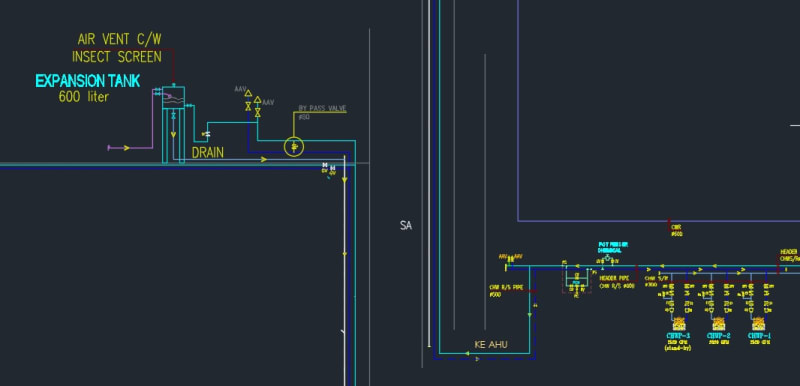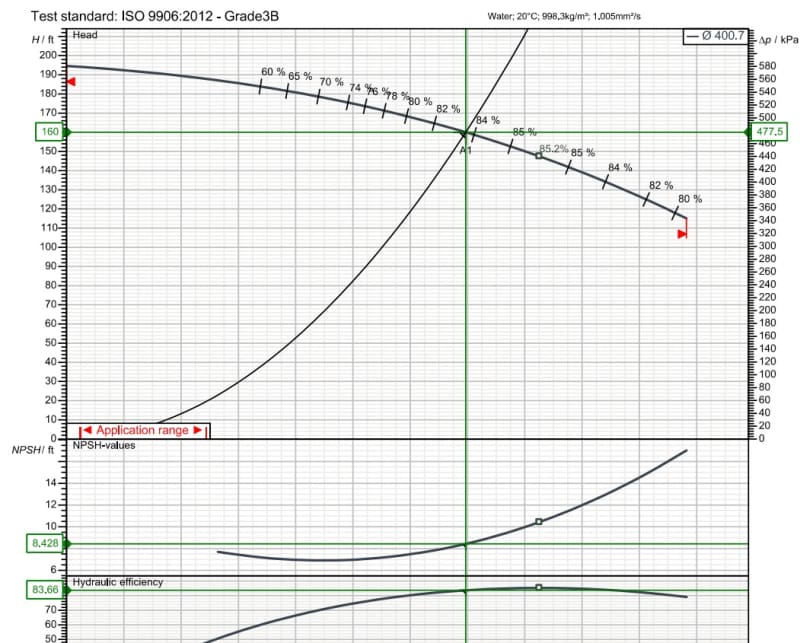Hi all,
I am a new engineer, just started to work. I have a debate regarding the pressure in the chiller closed loop system.
So here is the case:
1. Building height is 110m, as in the vertical pipe height
2. We are using 3 pumps in parallel (2 running and 1 backup) with each pump has 40m head, located in the first floor
So what is the pressure reading on the first floor when
a. no pump is running
b. 1 pump is running
c. 2 pumps are running
and here is what i think.
a. since height is 110m so pressure reading in the bottom is 11 bar, assuming 10m is 1 bar
b. with 40m head pump, the pressure will be 11 bar (gravity) + 4 bar (from the pump head) so total is 15 bar
c. depending on the pump curve, it will be 11 bar + 4 bar + 2 bar assuming 50% for the pump series effect so total will be 17 bar
please advice on my answers. thank you
I am a new engineer, just started to work. I have a debate regarding the pressure in the chiller closed loop system.
So here is the case:
1. Building height is 110m, as in the vertical pipe height
2. We are using 3 pumps in parallel (2 running and 1 backup) with each pump has 40m head, located in the first floor
So what is the pressure reading on the first floor when
a. no pump is running
b. 1 pump is running
c. 2 pumps are running
and here is what i think.
a. since height is 110m so pressure reading in the bottom is 11 bar, assuming 10m is 1 bar
b. with 40m head pump, the pressure will be 11 bar (gravity) + 4 bar (from the pump head) so total is 15 bar
c. depending on the pump curve, it will be 11 bar + 4 bar + 2 bar assuming 50% for the pump series effect so total will be 17 bar
please advice on my answers. thank you


